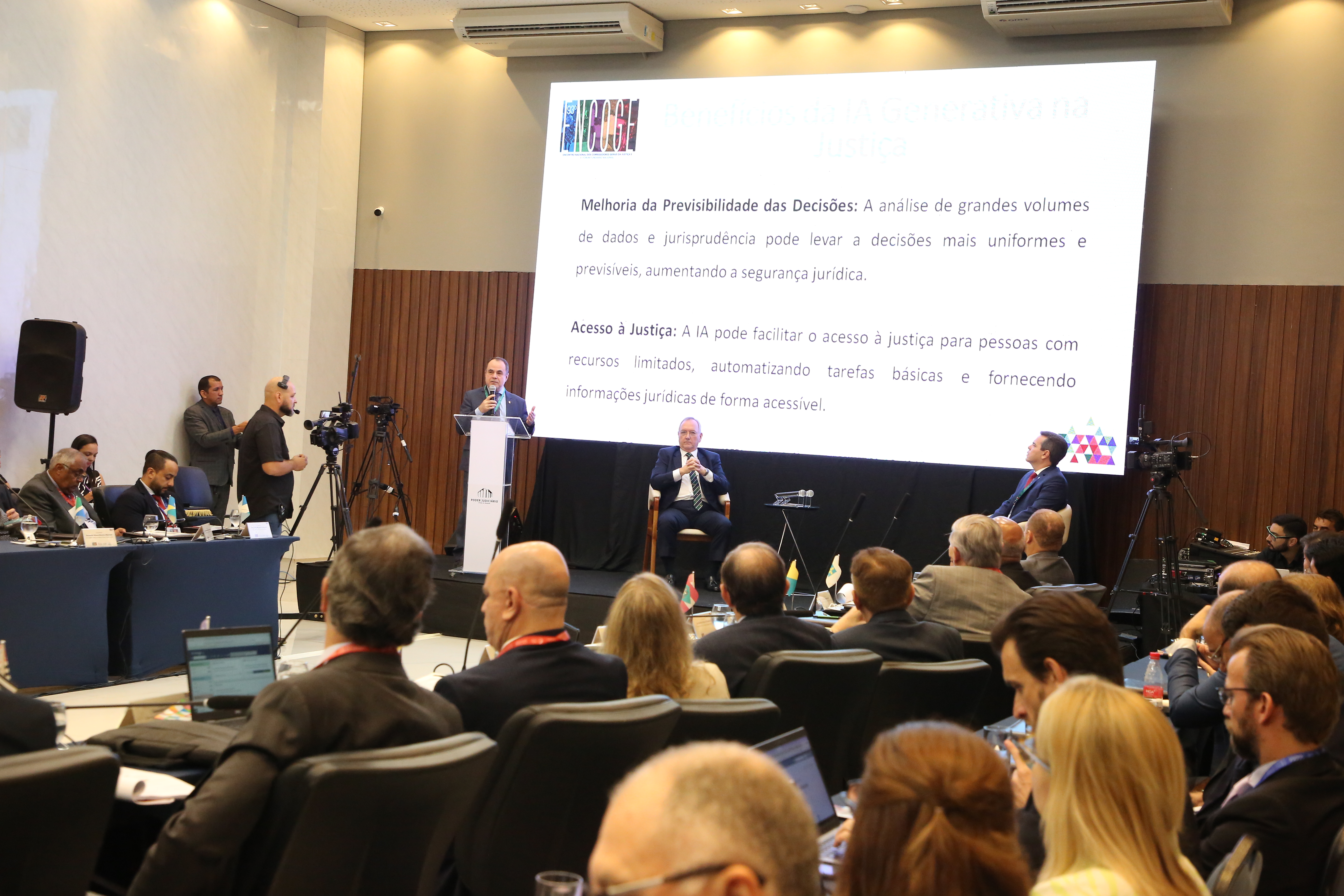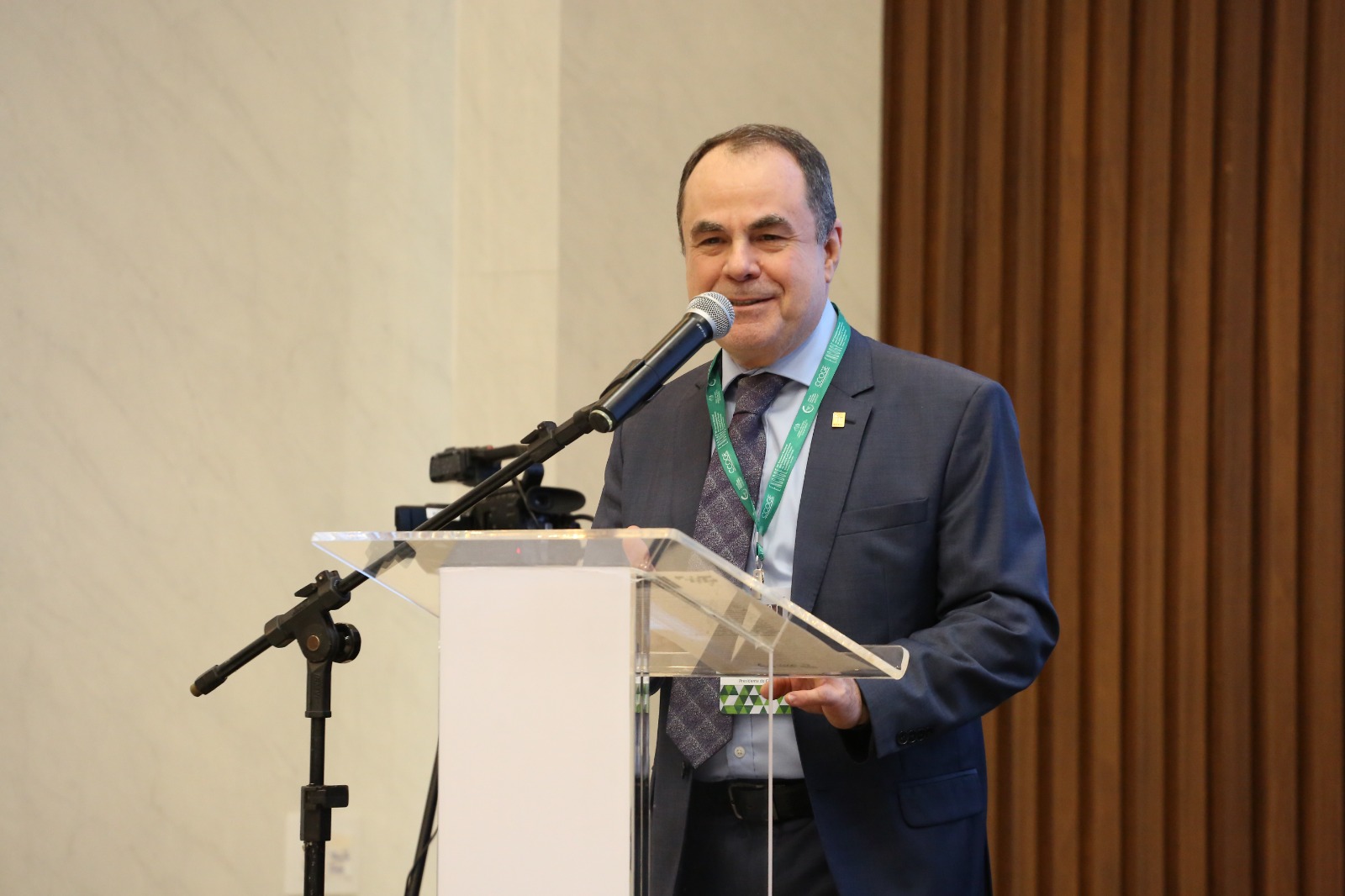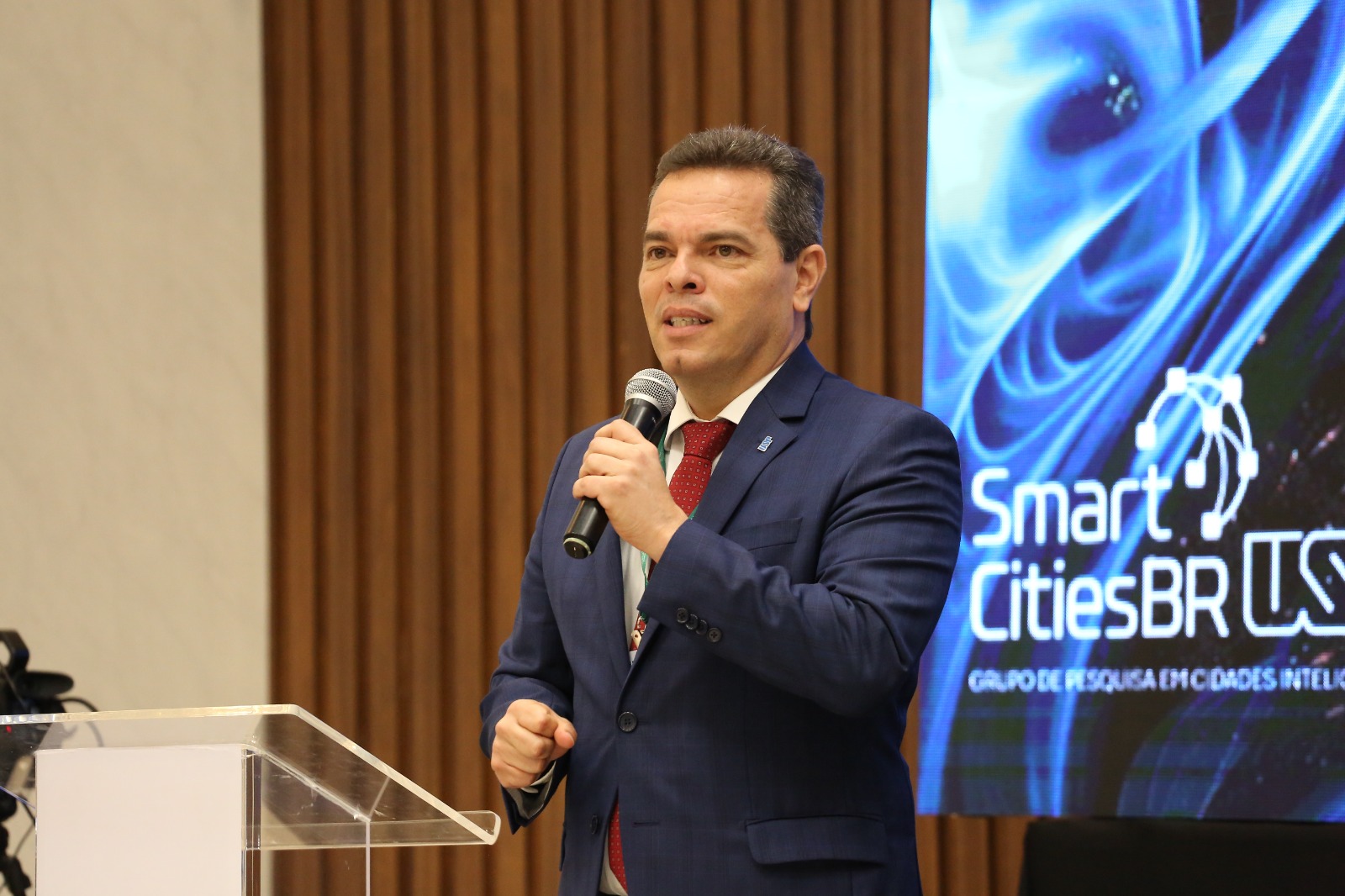
On Thursday morning (April 25th), Justice Marco Villas Boas presented the General Chiefs of Justice with the results of the Horus Project, developed in the course and workshops focusing on the use of Generative AI in the Judiciary, which has been taking place over the last few months at the Superior School of the Judges of the State of Tocantins - ESMAT, in cooperation with the University of the State of São Paulo - USP, and with the startup Taqui, which makes it possible to use artificial intelligence to process a large mass of information.
The name chosen for the project has peculiarities with the use of IAG, because the divinity Horus, son of Isis and Osiris, fought and killed Set, the divinity of evil, who took out one of his eyes in battle. To cover the eye socket, Horus wore a snake prosthesis, which the ancient Egyptians conceived as the lunar eye, or eye of the moon, while the other eye was conceived as the eye of the sun, or solar. Replicas of this serpent-shaped eye were worn on the forehead by the pharaohs as a symbol of power. Based on this mythological paradigm, Villas Boas compared the IAG to the lunar eye, which depends on the solar eye to see the whole, connecting the hemispheres of the brain. Its use can be powerful, but depends on caution and ethical limits.
This project, conducted by researchers from the SmartCitiesBR research group of USP, by magistrates, advisors and employees from the information technology department of the TJTO, is unprecedented and represents a mark in the ethical, responsible and innovative use of Generative AI in the Brazilian Judicial System, which has not yet been tried by other Brazilian courts.

Villas Boas noted that the IAG can assist in the production of reports with summaries of documents, written or oral evidence, and the production of draft decisions in simple and repetitive cases that have already been debated and decided in repeated precedents, with the necessary security in relation to sensitive data, making it clear that the IAG constructs texts and presents suggestions based on the repeated practices and decisions produced by magistrates, and that there must be special control in relation to undesirable biases (tendencies), so that they are not perpetuated, since the IAG only repeats the successes or mistakes contained in the wealth of information in the database used. "This is precisely why IAG cannot be used in criminal matters, nor can it be used on open-access platforms such as ChatGPT, Gemini and other platforms already available for general use by the population. The first experiences are encouraging, and promise to speed up the processing of cases and considerably reduce office backlogs," he said.
During his presentation, the Justice made it clear that this is an embryonic project, which has been built with great caution, and with extensive participation and debate in the academic environment of the Superior School of the Judges, with a special focus on the ethical and legal limits for the use of artificial intelligence, in order to enable the administrative bodies of the Court of Justice to make a secure analysis of the implementation of the project.
"This dialog among colleagues is important, every time we come together, we grow and become stronger and less susceptible to adverse results [...]. I hope that everything that happens here results in good fruit and good guidelines for the courts of justice of the country," he said at the end, congratulating the host, Justice Maysa Vendramini, for holding this important event.

Professor Luciano Araujo, a researcher at USP, complemented the discussion by explaining how the Adaptive Synthesis of Admissibility Requirements (SARA) works and emphasizing the importance of cooperation among USP, the TJTO and Esmat to boost innovation in this area. Araújo also stressed the need for security and speed in the progress and analysis of cases, in order to meet the massive demand for jurisdiction.
"It's a pleasure to show this initiative here, a cooperation among the University of the State of São Paulo, the TJTO and Esmat, about the potential of what can be done through this impactful innovation, an unprecedented action that goes far beyond what is said about the use of AI. We need a tool that processes documents on a large scale, that provides transparency, that gives us the reliability to decide whether or not to agree with the suggestion presented by Generative AI," he said.
Justice Pedro Nelson de Miranda Coutinho, present as a debater, contributed with questions related to ethics and the need for regulation in the area of artificial intelligence, highlighting the importance of paying attention to the particularities of the Judiciary. "We need to work towards serious regulation in the area of artificial intelligence," he said.
The lectures took place during the program of the second day of the 93rd National Meeting of General Chiefs of Justice (Encoge) and the 5th National Land Forum, in the city of Palmas.




